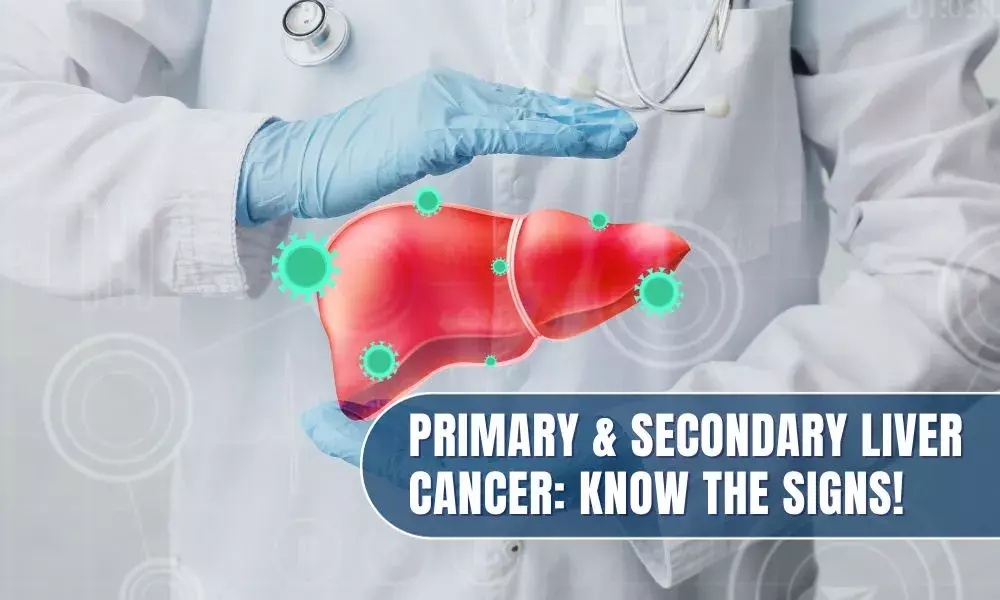Identifying the type of liver cancer, whether primary or secondary, is essential for effective diagnosis and therapy. Early detection is vital for increasing a patient’s quality of life.
The liver is one of the most important organs in the body, as it performs various functions that are critical for overall health.
Unfortunately, it is also prone to cancer, which is further categorized into primary and secondary liver cancer. While both types of disease affect the liver, their origins, causes, and treatment techniques are fundamentally different.
Primary vs Secondary Liver Cancer
Primary liver cancer develops within the liver and is frequently caused by chronic liver disease, viral infections, or other risk factors. On the other hand, secondary liver cancer is caused by the spread of cancer from another primary organ in the body.
What is Primary Liver Cancer?
Primary liver cancer is also known as hepatocellular carcinoma (HCC). It is a type of cancer that develops in the liver. It is the most frequent type of liver cancer, accounting for around 75-85% of cases. Individuals with liver disease, such as cirrhosis, chronic hepatitis B or C infection, or cirrhosis, are more likely to develop primary liver cancer.
Primary Liver Cancer Causes
-
Viral Hepatitis: Hepatitis B or C viruses increase the risk of developing primary liver cancer. These viruses can inflame the liver, causing cellular alterations that contribute to cancer growth.
-
Chronic liver disease: Chronic liver disease, particularly cirrhosis, is a major risk factor for primary liver cancer. Long-term liver inflammation and injury can result in the development of cancer-causing cells.
-
Genetic Factors: Some hereditary diseases, such as hemochromatosis and Wilson’s disease, can also increase the risk of developing primary liver cancer.
-
Alcohol Consumption: Excessive alcohol intake over an extended period can damage the liver and increase the chance of primary liver cancer.
-
Non-Alcoholic Fatty Liver Disease (NAFLD): NAFLD, often associated with obesity and metabolic syndrome, can proceed to cirrhosis, and raise the risk of liver cancer.
Treatment of Primary Liver Cancer:
Surgical resection, liver transplant, ablation therapy, chemotherapy, targeted therapy, and immunotherapy are all possible treatments for primary liver cancer. The treatment option depends on the stage of the cancer, the patient’s overall health, and other related factors.
What is Secondary Liver Cancer?
Secondary liver cancer, or metastatic liver cancer, occurs when cancer spreads (metastasizes) from another part of the body to the liver. This type of cancer is far more prevalent than primary liver cancer and can develop in different organs, including the lungs, colon, breast, and pancreas.
Secondary Liver Cancer Causes
-
Metastasis: Cancer cells can spread to the liver from initial tumors in other organs through the bloodstream or lymphatic system.
-
Colon Cancer is one of the most prevalent cancers that spread to the liver.
-
Breast Cancer: In the most advanced stages of this disease, Breast cancer can spread to the liver.
-
Lung Cancer: It can spread to the liver, especially if it has progressed to an advanced stage.
-
Pancreatic cancer: It has a significant potential to spread to the liver.
Treatment of Secondary Liver Cancer
The type and stage of the underlying tumor largely determines secondary liver cancer treatment. Surgery, chemotherapy, targeted therapy, and immunotherapy are all options. In some cases, palliative care may be advised to control the symptoms and improve the patient’s quality of life.
While both primary and secondary liver cancer affect the liver, they are different diseases with unique causes, risk factors, and treatment options. Early identification can help improve patient’s recovery and life post treatment, therefore one must consult a doctor at the earliest in case of experiencing any symptoms.





